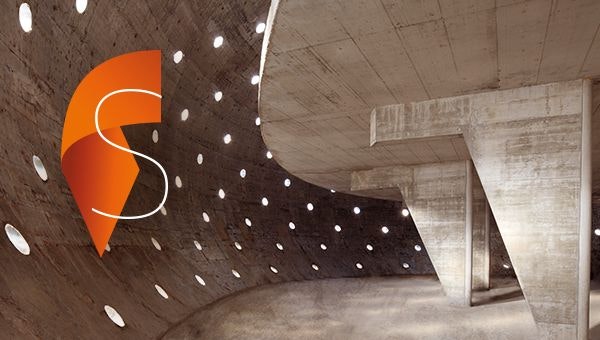
L'art des structures propose une découverte du fonctionnement des structures porteuses, telles que les bâtiments, les toitures ou les ponts. Ce cours présente les principes du dimensionnement et les structures en câbles et en arcs. Un deuxième cours présente les structures en treillis, en poutres et en cadres.
Après avoir suivi ce cours, vous serez capable d'identifier les structures en câble, en arc et en arc et câble. Vous pourrez déterminer les efforts dans les éléments de structure principaux et procéder au choix de leurs dimensions en fonction du matériau de construction choisi.
Read more
L'art des structures propose une découverte du fonctionnement des structures porteuses, telles que les bâtiments, les toitures ou les ponts. Ce cours présente les principes du dimensionnement et les structures en câbles et en arcs. Un deuxième cours présente les structures en treillis, en poutres et en cadres.
Après avoir suivi ce cours, vous serez capable d'identifier les structures en câble, en arc et en arc et câble. Vous pourrez déterminer les efforts dans les éléments de structure principaux et procéder au choix de leurs dimensions en fonction du matériau de construction choisi.
L'art des structures propose une découverte du fonctionnement des structures porteuses, telles que les bâtiments, les toitures ou les ponts. Ce cours présente les principes du dimensionnement et les structures en câbles et en arcs. Un deuxième cours présente les structures en treillis, en poutres et en cadres.
Après avoir suivi ce cours, vous serez capable d'identifier les structures en câble, en arc et en arc et câble. Vous pourrez déterminer les efforts dans les éléments de structure principaux et procéder au choix de leurs dimensions en fonction du matériau de construction choisi.
Votre maîtrise des constructions de statique graphique ainsi que de l'applet de calcul i-Cremona vous permettra de comparer diverses solutions et de choisir la forme la plus appropriée pour un type de structure donné. De manière générale, vous pourrez, en observant les structures autour de vous, reconnaître leur mode de fonctionnement, expliquer le choix de leurs dimensions et de leurs proportions.
What's inside
Syllabus
Introduction
Cette première semaine vous permettra de faire connaissance avec l'environnement du cours sur la plateforme i-structures ainsi de vous rappeler les principes de ce que sont les forces.
Le sous-système est un élément décisif que nous utiliserons dans toute la suite du cours. Apprenez donc bien à l'utiliser pour résoudre les problèmes qui vous sont proposés.
Prenez le temps de bien comprendre la terminologie que nous utilisons, faites les constructions graphiques en vous assurant que vous pouvez bien imprimer les feuilles et apprenez à utiliser l'applet i-cremona.
Read more
Syllabus
Good to know
Save this course
Reviews summary
Highly reviewed structures course
Activities
Trouver un mentor pour obtenir des conseils et du soutien
Show steps
Trouver un mentor peut vous fournir des conseils et du soutien précieux tout au long du cours.
Show steps
-
Identifier des personnes dans votre réseau qui ont de l'expérience dans le domaine des structures.
-
Les contacter pour leur demander s'ils seraient prêts à vous servir de mentor.
-
Rencontrer régulièrement votre mentor pour discuter de vos progrès, obtenir des commentaires et poser des questions.
Show all one activities
Trouver un mentor pour obtenir des conseils et du soutien
Show steps
Trouver un mentor peut vous fournir des conseils et du soutien précieux tout au long du cours.
Show steps
- Identifier des personnes dans votre réseau qui ont de l'expérience dans le domaine des structures.
- Les contacter pour leur demander s'ils seraient prêts à vous servir de mentor.
- Rencontrer régulièrement votre mentor pour discuter de vos progrès, obtenir des commentaires et poser des questions.
Career center
Structural Engineer
Structural Detailer
Civil Engineer
Architectural Technologist
Geotechnical Engineer
Architectural Drafter
Transportation Engineer
Aerospace Engineer
Construction Manager
Project Engineer
Mechanical Engineer
Materials Engineer
Product Designer
Industrial Designer
Architectural Designer
Reading list
Share
Similar courses
OpenCourser helps millions of learners each year. People visit us to learn workspace skills, ace their exams, and nurture their curiosity.
Our extensive catalog contains over 50,000 courses and twice as many books. Browse by search, by topic, or even by career interests. We'll match you to the right resources quickly.
Find this site helpful? Tell a friend about us.
We're supported by our community of learners. When you purchase or subscribe to courses and programs or purchase books, we may earn a commission from our partners.
Your purchases help us maintain our catalog and keep our servers humming without ads.
Thank you for supporting OpenCourser.


